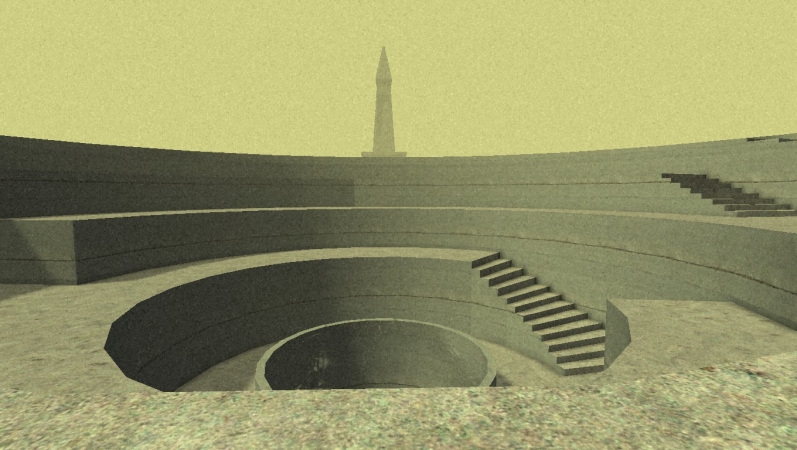Viral Survival
My initial concept begins with the Jejune Institute and ends with chicken dinner; I wanted to create a real life survival game. My friends and I had been playing the battle royale style (and loving it), but found we consistently changed our true purpose. At first, we just wanted to survive. Then, we wanted to win. Then, we wanted to eliminate. It seemed a natural course, but then we wanted to build a skyscraper (“skybase”). Then we wanted to ride grenades up a mountain. Then we wanted to ride rockets into enemies. Then we wanted to ride rockets down from a skybase into an enemy team to get the match winning kill.
The beauty of the survival games we’ve played, specifically Fortnite BR (and to a lesser extent PUBG), is in the myriad opportunities for a vast variety of experiences. The Jejune Institute introduced a seriously provocative set of activities that intervened in everyday life; I would like to create a game designed to be played within a greater community – like a school campus or other communal areas (likely not residential) – that elicits a sense of creativity, innovation, and fear akin to the battle royale genre.
My initial concept appropriated many concepts involved in the interventionist game Assassin. I went to a boarding school in which we had an annual, schoolwide competition. Each player was delivered via mailbox a small pack of stickers and a name. If the player successfully stuck another with a sticker without being seen by anyone except the victim, it was considered a successful kill. I wanted to appropriate the concept of stickers, but decided it too difficult to design a variant game, and instead focused on the experience.
Therefore, I shifted the game such that it can be played by a single person for the sake of the experience. Instead of competing to get “kills” using stickers (I did not like the idea of an angry person catching me trying to tag them with a sticker), I flashed back to my score from Artwork #1, and decided to use chocolate/candy. In place of eliminations, the player attempts to distribute pieces of chocolate throughout the community, earning a point for each, and dies when someone asks the player what they are doing (or any other variant). With this schema in mind, contrary to my score, this chocolate would not be many parts of a shared whole, but rather individually wrapped pieces designed to imply each piece is especially for the target. The current Winnner Winner concept revolves around the idea of distributing all your chocolate; as survival games typically have 100 contestants, I adapted this to a bag of 100 Hershey’s brand Kisses.
This is where I got stuck. I call this game Viral Survival; a virus is an infectious agent living within other cells. You are a positive viral agent living within the community whose only purpose is to spread joy and elicit positive emotion. However, people fear viruses; so, despite your positive influence, once caught the virus is immediately removed from the community. This irony serves to critique the existing battle royale genre in that every interaction you make with other players or the environment could impede the overall goal of survival. That is to say, in many cases, to play is to lose. The goal is to distribute all of your Kisses without being questioned for your behavior.
I’m finding the most difficulty establishing win conditions that successfully emulate a sense of survival. A squad mode variant for multiple players appropriates some of the guile behind games like Mafia and Avalon, in that players would have different coloured Kisses, and could be eliminated by other viruses that discover your particular brand (color). This would add another level of competition that simultaneously allows for multiple players/teams and an interesting game mechanic, but I still think it fails to achieve the goal of this unorthodox, community-centric intervention. I considered having both stickers and Kisses, as they offer different forms of scoring (like different weapons). Moreover, to emulate the concept of Supply Drops/Care Packages, if the player sees a known person, they must go explain to them everything they are doing. This is meant to offer a brief respite; supply drops attract a lot of attention, but once successfully retrieved, more often than not, offer a lot of useful resources towards victory. In Viral Survival, I believed the mental relief to be the equivalent of high level equipment.
Initial Research
I did a little exploration on both NEU campus and in the downtown area around the Commons, Gardens, and Charles street to Newbury. I couldn’t bring myself to put stickers on anyone, and even distributing what few Kisses proved a daunting task despite several willing participants. Therefore, I think this game must be played on NEU campus or another social community tolerant of such an intervention.
Conclusion
In short, I intend to question the Battle Royale genre, the developing playstyles throughout its games, and specifically address the value of player-player and player-environment interactions through a real-life parallel with contrary focus (community rather than killing everyone).




